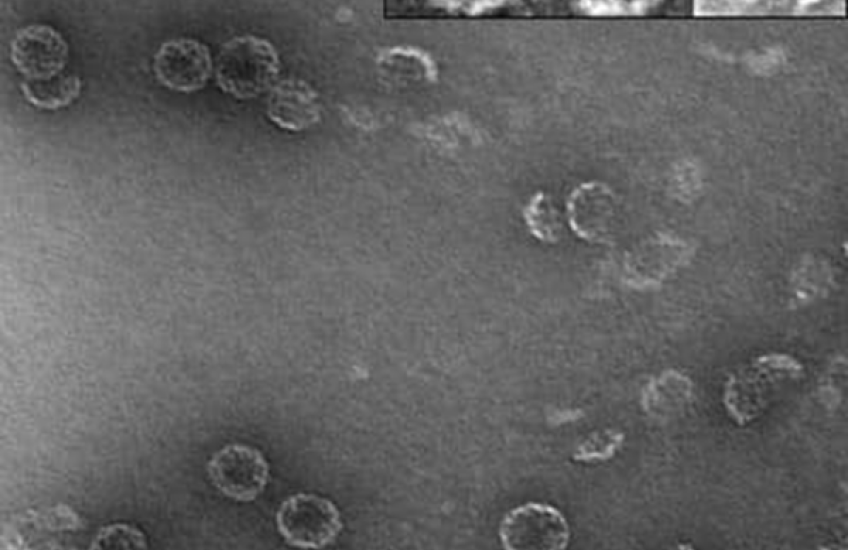Bacteria have evolved different kinds of tiny encapsulated domains known as nanocompartments in their cells that allow them to adapt to specific environments by making their metabolism more efficient and by protecting them from metabolic molecules that would otherwise harm or kill them.
In a study published in Nature Microbiology, a research team at Harvard Medical School and the Wyss Institute for Biologically Inspired Engineering at Harvard University reports a systematic microbial analysis revealing more than 900 select so-called encapsulin nanocompartments that have diverse protective, storage and ecological functions and are crucial for the survival of microbes.
The findings could form the basis for new chemical and metabolic engineering approaches.
“The discovery of encapsulin systems with different functions in at least 3 percent of sequenced microbial genomes is a huge step towards understanding how these organisms compartmentalize potentially toxic reactions and towards harnessing them biotechnologically in the future,” said the study’s senior author Pamela Silver, the Eliot T. and Onie H. Adams Professor of Biochemistry and Systems Biology at HMS and a Wyss Institute core faculty member.
“We were particularly struck by the finding that encapsulins may play a role in the global nitrogen cycle, which ecologically speaking is highly relevant,” she said.
In principle, encapsulin nanocompartments consist of a shell built from a number of encapsulin proteins that encloses cargo proteins with damaging enzymatic functions, thereby sequestering them from the rest of the cell.
The team started out with the DNA sequences of few confirmed encapsulin systems and undertook a computational search to find all available microbial genomes for the presence of similar sequences.
The result: an impressive 909 different encapsulin systems that occur in microbial organisms living in water or soil or as commensals and pathogens of larger organisms.
Transferring Pieces of DNA
Studying the biochemical functions of many encapsulins, however, presents a challenge because their parental microorganisms cannot be grown in laboratory conditions. To make them more tractable, Tobias Giessen, HMS research fellow in systems biology and first author of the study, transferred pieces of DNA that encode a few select encapsulin systems from distinct classes with shared sequence and structural similarities to E. coli.
“Within their new hosts, these encapsulin systems could form capsids with very defined sizes on the nanoscale. These artificially expressed systems were able to protect the cells from high doses of different stressors that are also produced as byproducts of their normal metabolism,” said Giessen.
“Some systems were also able to mineralize and store otherwise toxic iron, while still others may be involved in the so-called anammox process, which generates free dinitrogen from ammonium and nitrite with the rocket fuel hydrazine being an intermediate,” Giessen said.
Microbial anammox reactions are a vital part of the global nitrogen cycle and account for substantial nitrogen losses from marine environments.
Silver and Giessen think that the diversity of biological reactions performed by encapsulin systems even could be expanded in the biotechnological realm.
Already in 2016, they provided a first engineerable encapsulin platform for the synthesis of high value and commodity materials. By converting an encapsulin from a hot-spring- and hydrothermal-vent-dwelling bacterium that normally stores iron to an artificial silver nanoparticle-synthesizing encapsulin factory, they invented a new method to produce antiseptic silver for possible clinical use.
“The vast reservoir of individual encapsulin systems—and the way they fall into functionally distinct categories—gives us a handle for reprogramming bacteria and other organisms in chemical or green engineering applications,” said Silver.
“We can now start to chemically and genetically functionalize different encapsulins to create protected synthetic nanocompartments with entirely new capabilities in different organisms. We can also use existing natural encapsulin systems to make biotechnological production processes more stress resistant,” she said.
“The study is exciting because it provides synthetic biologists a new toolbox for engineering new cellular devices for many applications,” said Donald Ingber, Wyss Institute founding director, the HMS Judah Folkman Professor of Vascular Biology in the Department of Surgery at Boston Children’s Hospital, and Professor of Bioengineering at the Harvard John A. Paulson School of Engineering and Applied Sciences.
Adapted from a Wyss Institute news release.



